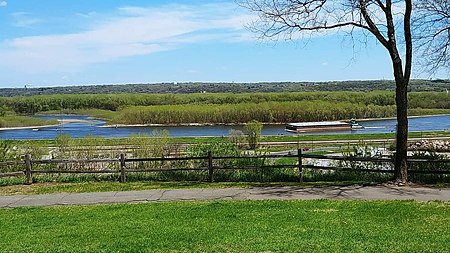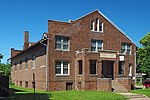South St. Paul, Minnesota
Cities in Dakota County, MinnesotaCities in MinnesotaMinnesota populated places on the Mississippi RiverUse mdy dates from July 2023

South St. Paul is a city in Dakota County, Minnesota, United States, immediately south and southeast of St. Paul and east of West St. Paul. The population was 20,759 at the 2020 census. The town was a major meat-packing location, and many residents are descended from immigrants of Southern European and Eastern European heritage, who came to work in the meat-packing plants in the early twentieth century. A post office called "South St. Paul" has been in operation since 1888. The city was named based on its location, south of St. Paul.
Excerpt from the Wikipedia article South St. Paul, Minnesota (License: CC BY-SA 3.0, Authors, Images).South St. Paul, Minnesota
Veterans Memorial Drive,
Geographical coordinates (GPS) Address Nearby Places Show on map
Geographical coordinates (GPS)
| Latitude | Longitude |
|---|---|
| N 44.891944444444 ° | E -93.036111111111 ° |
Address
Veterans Memorial Drive 155
55075
Minnesota, United States
Open on Google Maps







